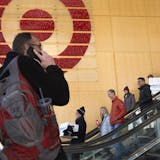State officials told a House committee on Wednesday that they have a plan for tackling eligibility errors as people go through MNsure to qualify for public health insurance programs.
The plan already has delivered improvements, they say, since the period covered in a recent audit that suggested thousands of people last year didn't qualify for their coverage, costing the state up to $271 million.
"While the system we have today has been improved compared to the system that was audited in early 2015, there's no doubt there's more work to be done," said Tom Baden, the commissioner of the state's MN.IT department, during a hearing near the Capitol in St. Paul.
"My ask is that we don't stop, admire the problem for six months and then ramp up again," Baden said, referring to an early 2014 pause in developing the MNsure IT system as state officials evaluated whether to change course. "If we pause again, I think we'll lose the momentum we gained in 2015."
The report issued in January by Legislative Auditor James Nobles looked at a sample of cases from early 2015 and found errors in 38 percent of those who enrolled through the state's health insurance exchange in either the Medical Assistance or MinnesotaCare programs.
Auditors applied the error rate to a larger group that enrolled through MNsure to project the potential cost of problems that were a mix of computer issues, inadequate training and human error.
The state Department of Human Services (DHS), which uses the MNsure system for enrollment and eligibility in the programs, said the report points to issues that it continues to address, but questioned whether the audit overstates the problem.
During Wednesday's hearing, DFLers and Republicans took up the methodological debate, with Rep. Tina Liebling, DFL-Rochester, saying she seriously questioned the numbers. Auditors looked at many enrollees who had not yet gone through the DHS renewal process, which was designed to verify eligibility.



